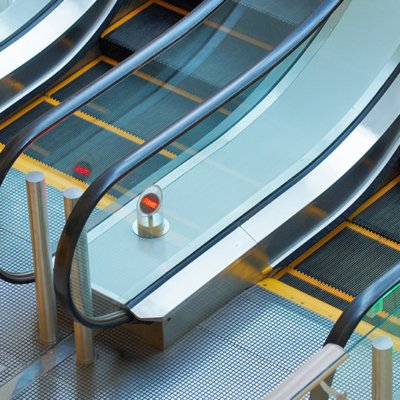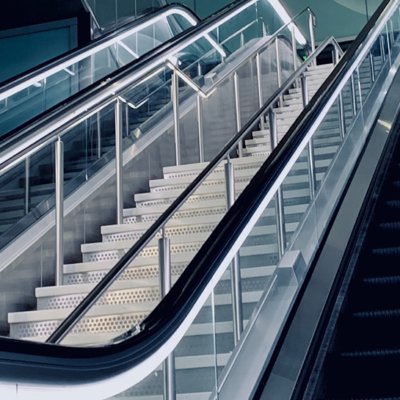Article 19 -Escalator Floor Plate Requirements
Requirements of Escalator Floor Plate
In this article, we intend to explain the escalator and moving walk floor plate and their standard safety requirements in detail which must be considered by the manufacturers to eliminate the potential hazards and lead to more safety of the escalators and moving walk.
The platform surface of the escalator and moving walk on both landings that are installed before the comb plate are called “Floor Plate” which is used as escalator and moving walk machine room cover. The floor plate is made of stainless steel or extruded aluminum according to the project installation environment and utilization and for more resistance, it is installed on the metal chassis. The standards guidelines for the escalator and moving walk floor plate are as below:
- The floor plate must be made of imperforated panels (without any gaps or spaces).
- The floor plate must be opened only by keys or a suitable tool.
- If the floor plate has two parts or more, one safety device must be provided for the first plate and other plates must be designed in a way that they cannot be opened or removed before the first plate is opened. If all of them can be opened in any order, we must install a safety device for each plate.
- Since the authorized person can enter inside the machinery, the floor plate must be opened from the inside and no locks must be considered.
Note: The floor plate is considered as an inspection cover in escalators and moving walks and other inspection covers (e.g. outside cladding and balustrade) must follow the conditions stated above.
Note: The maximum deflection of the escalator and moving walk comb plate and floor plate under a rated load of 5000 N/m2 must not exceed 4 millimeters.
Floor Plate Anti-Slipping Test
The Anti-slipping issue was not mentioned in the previous version of the escalator and moving walk standard and it was pointed out for the first time in the latest version of the standard EN 115-1:2017. The anti-slipping test must be considered for step, pallet, comb plate, and floor plates to reduce slipping accidents in escalators and moving walks.
The test DIN 51130, was carried out in the Federal Republic of German for flooring covers for many years. Then, manufacturers of escalators and moving walks assessed implementing this test for their products in CEN/TC 10/WG 2 that led to an appropriate result. This means that they could carry out this test for escalator and moving walk components and this test became mandatory by EN 115-1:2017.
To conduct Escalator and moving walk anti-slipping test, the manufacturers make use of a specific oil that does not change or worsen the test result rather helps to create a real-time condition. The escalator step, moving walk pallet, floor plate, and comb plate must be tested in an inclined form with different angles of inclination. Each angle determines a special assessment group that falls into four categories: R9, R10, R11, R12, and R13.
R9 indicates the lowest anti-slip assessment group and R13 shows the highest. R9 is the general anti-slipping group for installation. However, escalators and moving walks impacted by rain and snow must comply with group R10. Also, for inclined moving walks, coverings that conform to assessment group R11 must be taken into consideration.
The anti-slipping group of construction flooring surface which is located in the surrounding of the upper and lower escalator and moving walk landings must be in the same group with device floor plates or can vary in one group at most.
|
Anti-Slipping Assessment Group |
||
|
No. |
Inclination |
Assessment group |
|
1 |
from 6° up to 10° |
R 9 |
|
2 |
over 10° up to 19° |
R 10 |
|
3 |
over 19° up to 27° |
R 11 |
|
4 |
over 27° up to 35° |
R 12 |
|
5 |
greater than 35 |
R13 |





